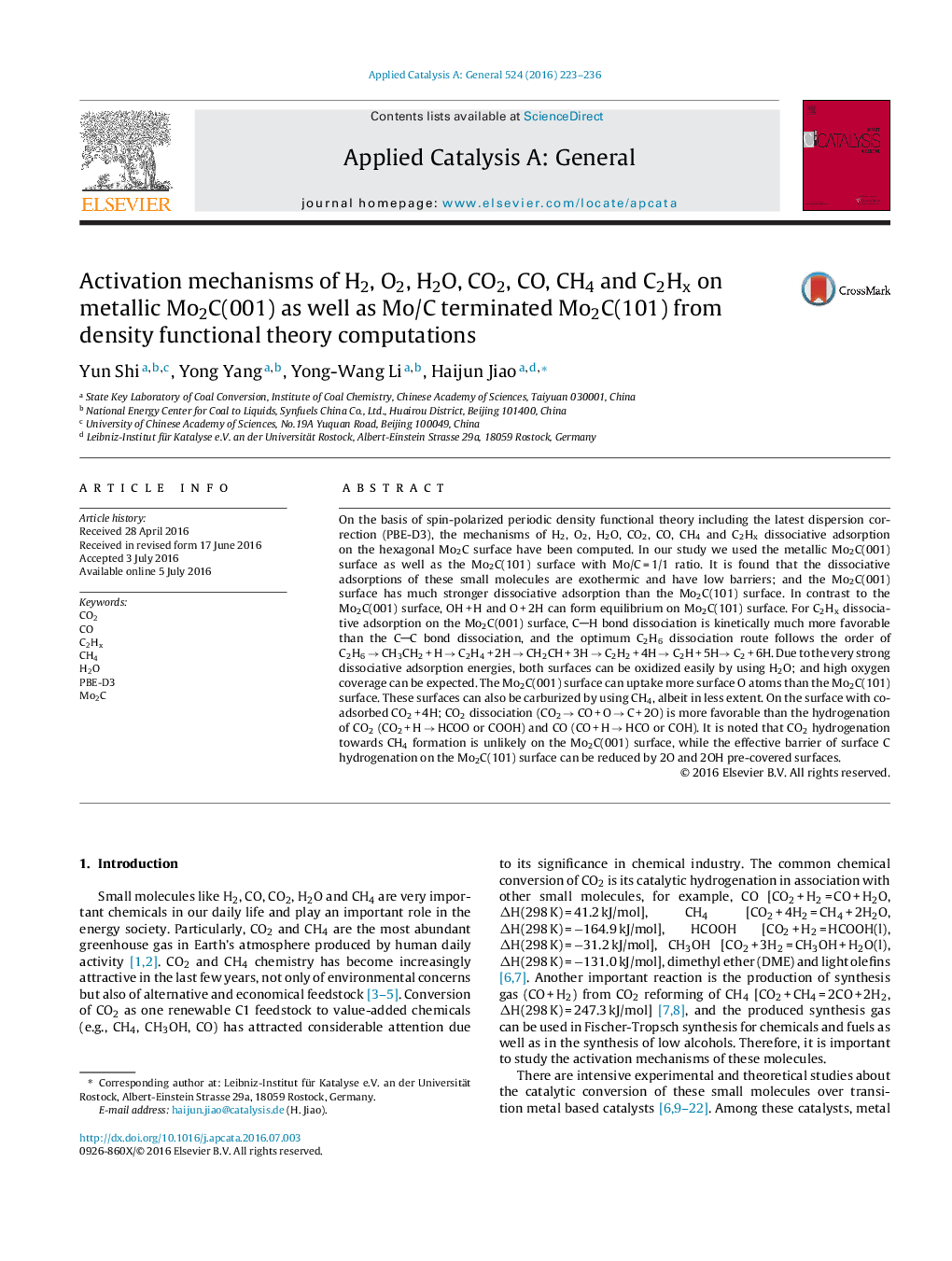| کد مقاله | کد نشریه | سال انتشار | مقاله انگلیسی | نسخه تمام متن |
|---|---|---|---|---|
| 38741 | 45789 | 2016 | 14 صفحه PDF | دانلود رایگان |

• Hexagonal Mo2C(001) and Mo2C(101) surfaces have been computed.
• Dissociative adsorption of small molecules are favorable on both surfaces.
• Metallic Mo2C(001) is more active than Mo/C terminated Mo2C(101).
• CO2 hydrogenation towards CH4 formation is unlikely on Mo2C(001).
• 2O and 2OH pre-covered Mo2C(101) reduce CH4 formation effective barrier.
On the basis of spin-polarized periodic density functional theory including the latest dispersion correction (PBE-D3), the mechanisms of H2, O2, H2O, CO2, CO, CH4 and C2Hx dissociative adsorption on the hexagonal Mo2C surface have been computed. In our study we used the metallic Mo2C(001) surface as well as the Mo2C(101) surface with Mo/C = 1/1 ratio. It is found that the dissociative adsorptions of these small molecules are exothermic and have low barriers; and the Mo2C(001) surface has much stronger dissociative adsorption than the Mo2C(101) surface. In contrast to the Mo2C(001) surface, OH + H and O + 2H can form equilibrium on Mo2C(101) surface. For C2Hx dissociative adsorption on the Mo2C(001) surface, CH bond dissociation is kinetically much more favorable than the CC bond dissociation, and the optimum C2H6 dissociation route follows the order of C2H6 → CH3CH2 + H → C2H4 + 2H → CH2CH + 3H → C2H2 + 4H → C2H + 5H→ C2 + 6H. Due to the very strong dissociative adsorption energies, both surfaces can be oxidized easily by using H2O; and high oxygen coverage can be expected. The Mo2C(001) surface can uptake more surface O atoms than the Mo2C(101) surface. These surfaces can also be carburized by using CH4, albeit in less extent. On the surface with co-adsorbed CO2 + 4H; CO2 dissociation (CO2 → CO + O → C + 2O) is more favorable than the hydrogenation of CO2 (CO2 + H → HCOO or COOH) and CO (CO + H → HCO or COH). It is noted that CO2 hydrogenation towards CH4 formation is unlikely on the Mo2C(001) surface, while the effective barrier of surface C hydrogenation on the Mo2C(101) surface can be reduced by 2O and 2OH pre-covered surfaces.
Figure optionsDownload high-quality image (253 K)Download as PowerPoint slide
Journal: Applied Catalysis A: General - Volume 524, 25 August 2016, Pages 223–236